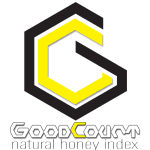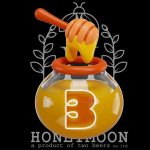Manuka number of Honey or Manuka Honey?!
The "Manuka number" of honey is often associated with the grading system used to measure the antibacterial potency and quality of Manuka honey, a type of honey produced primarily in New Zealand and Australia from the nectar of the **Manuka tree** (*Leptospermum scoparium*).
Key Points About Manuka Honey Ratings:
1. **Unique Manuka Factor (UMF)**: The **UMF** is one of the most recognized grading systems for Manuka honey. It measures the levels of key natural markers found in Manuka honey that indicate its potency, purity, and quality.
The UMF rating is based on three key compounds:
- Methylglyoxal (MGO): The primary antibacterial compound.
- Leptosperin: A chemical marker unique to Manuka nectar.
- Dihydroxyacetone (DHA): A precursor to MGO found in the nectar of Manuka flowers.
The UMF number (e.g., UMF 5+, UMF 10+, UMF 15+, UMF 20+, etc.) reflects the concentration of these compounds, particularly MGO. The higher the number, the more potent the honey's antibacterial properties.
2. **Methylglyoxal (MGO) Rating**: Some Manuka honey producers use the **MGO rating system** directly, which indicates the concentration of methylglyoxal in mg/kg. For example:
- MGO 100+ (mild antibacterial potency)
- MGO 250+ (moderate potency)
- MGO 400+ (high potency)
- MGO 550+ (very high potency)
The MGO number can be converted roughly to the...

 عسل گودکرت
عسل گودکرت عسل هانی مون
عسل هانی مون عسل تایپ یک
عسل تایپ یک عسل تایپ دو
عسل تایپ دو عسل تایپ سه
عسل تایپ سه عسل تایپ چهار
عسل تایپ چهار
 عسل گودکرت
عسل گودکرت